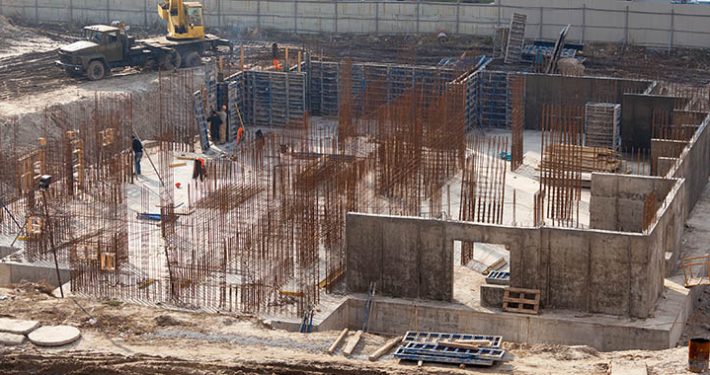A Impact of Tech in Changing the Field of Structural Engineering

Structural engineering an essential area fundamental to today's construction, merging artistic vision with scientific principles to develop safe and functional spaces. So, what precisely is structural engineering? It is a segment of the engineering field that is concerned with the creation and evaluation of buildings that support or resist loads, ensuring that structures such as buildings and bridges can withstand various forces while satisfying both functional and aesthetic criteria. For those seeking to grasp the details of this field, traversing its intricacies can be intimidating, yet fulfilling.
As we advance into the 21st century, technology plays an increasingly significant role in revolutionizing structural engineering. Utilizing state-of-the-art software applications that streamline detailed design to new materials that improve sustainable practices, the field of structural engineering is evolving rapidly. This shift is redrawing global skylines but also redefining how structural engineers collaborate with architects and tackling issues like public safety, disaster response, and restoration of historic structures. Together, these advancements signal a future where structural engineering will continue to innovate and adapt to the ever-changing demands of society.
Understanding Structural Design
Structural design is a distinct field within civil engineering that focuses on the design and analysis of structures to ensure they can effectively support the weights and forces they experience. This discipline encompasses a variety of structures, from buildings and overpasses to tunnels and dams. Engineering professionals are tasked with analyzing how these structures will respond to different stresses, ensuring they are both usable and safe under different conditions, including natural forces like gale and ground shakings.
One of the main tasks of structural designers is to formulate load-bearing structures that can spread forces effectively. They utilize principles from natural science and materials science to identify the appropriate materials and designs that will support a structure's burden while also considering risk assessments. This includes calculating weights from inhabitants, furniture, ice, and other external elements, allowing engineers to develop and execute design solutions that enhance overall building safety.
As technology continues to advance, the role of structural engineering is evolving. Tools like 3D representation and simulation software are becoming ever essential, allowing engineers to see their designs more effectively and make informed decisions during the construction process. Moreover, the focus on sustainability is leading to the adoption of environmentally friendly materials and methods, transforming how structures are designed and built, and preparing for future developments in the discipline.
The Influence of Technology on Structural Design
Progress in tech have significantly changed the field of structural design, elevating the way engineers handle projects. With the arrival of advanced design programs, structural engineers can now create accurate 3D models that represent how buildings will react to different stresses and environmental conditions. This allows for a greater in-depth examination of materials and structural integrity, resulting in more secure and streamlined designs. The utilization of Building Information Modeling (BIM) has also facilitated better teamwork among architects, engineers, and builders, guaranteeing that each facet of the construction process is linked.
Furthermore, technology has allowed the adoption of cutting-edge materials that can withstand greater loads while being lighter and more durable. High-performance concrete, advanced steel alloys, and composite materials are just a small instances of how modern engineering is extending the boundaries of structural design. These materials aid in sustainability practices, allowing for buildings that diminish environmental footprint without sacrificing on strength or safety. The ability to test these materials virtually before real-world implementation introduces another layer of reliability and efficiency to the design method.
In conclusion, data analytics and artificial intelligence are becoming pivotal in forecasting models, assisting engineers predict potential structural issues before they happen. By analyzing historical data and performance patterns, engineers can more accurately grasp how structures perform under stress, leading to designs that are essentially more resilient. This proactive approach not only boosts safety but also opens up paths for intelligent infrastructure that can respond to changing circumstances over time, emphasizing technology's vital role in the upcoming of structural engineering.

Future Trends in Structural Engineering
As we look toward the horizon, technology will continue to play a pivotal role in reshaping structural engineering. One of the most noteworthy trends is the enhanced integration of AI and ML. These technologies are improving the design and analysis processes, allowing engineers to model complex structural behaviors more precisely and effectively. structural engineering Surrey can also assist in identifying potential issues before they arise, guaranteeing that structures can be designed for longevity and safety.
Another crucial trend is the stress on sustainability and green building practices. As ecological issues become more pressing, structural engineers are increasingly tasked with developing innovative ways to reduce waste and improve energy efficiency. This includes using sustainable materials, refining building designs for natural lighting and ventilation, and adopting practices that fulfill or exceed certification standards for eco-friendly buildings. Such initiatives not only benefit the planet but also reduce long-term operational costs for building owners.
Finally, the adoption of advanced construction technologies, such as 3D printing and modular construction, is poised to transform the landscape of structural engineering. These methods allow for faster construction times and the potential for more complex designs, which were previously unattainable. The rise of smart materials, which can adapt to environmental changes, will also enable structures to respond dynamically to their surroundings, enhancing both security and efficiency. Collectively, these trends indicate a future where structural engineering will be more efficient, sustainable, and innovative than ever before.
